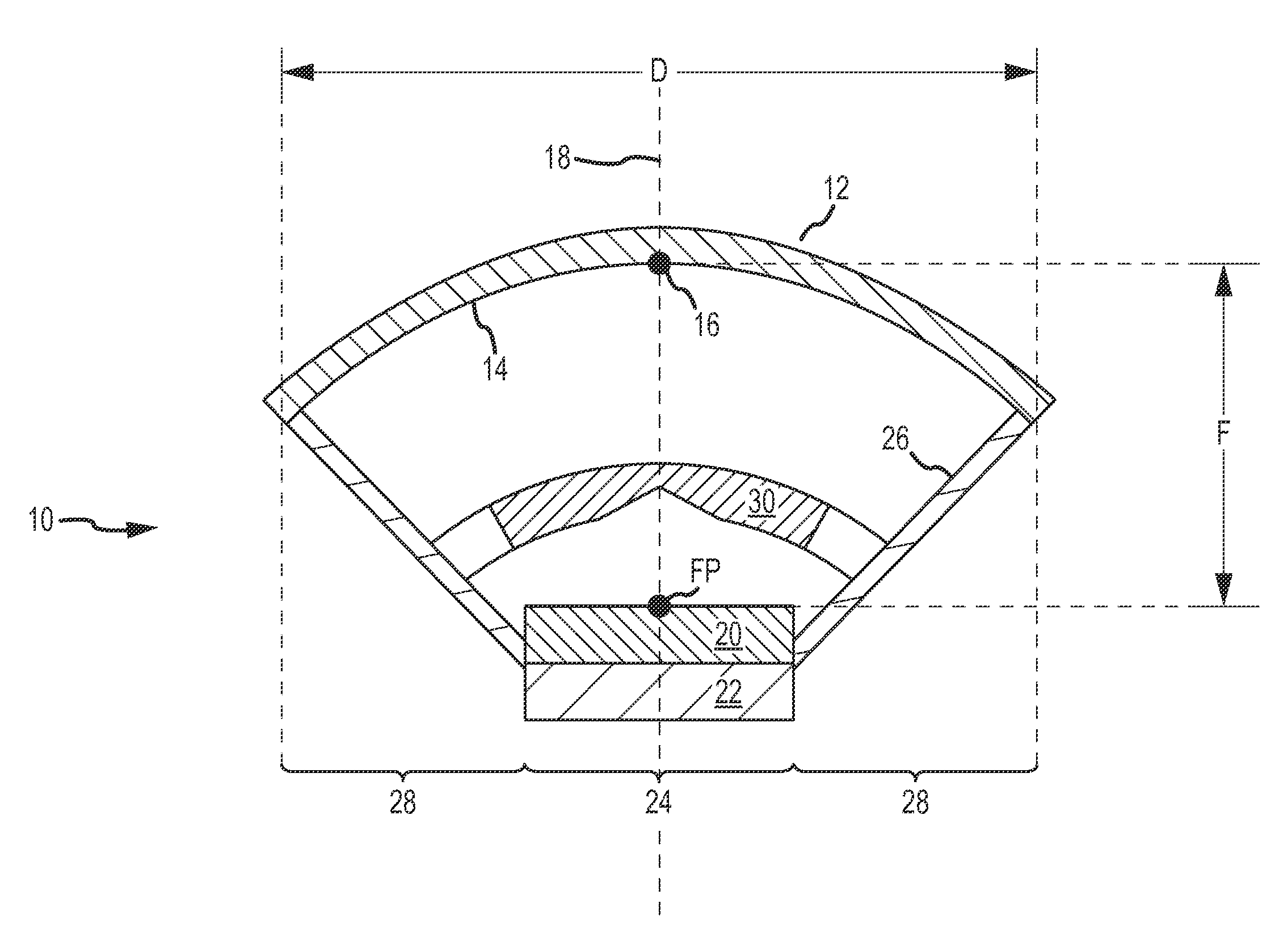Beam shaping of RF feed energy for reflector-based antennas
a technology of reflector-based antennas and beam shaping, which is applied in the direction of antennas, simultaneous aerial operations, electrical equipment, etc., can solve the problems of increasing the central blockage of the rf feed pattern and further increasing the size of the central blockag
- Summary
- Abstract
- Description
- Claims
- Application Information
AI Technical Summary
Benefits of technology
Problems solved by technology
Method used
Image
Examples
Embodiment Construction
[0021]The invention describes beam shaping of RF feed energy for reflector-based antennas. A RF beam-shaping element is located between the primary reflector and the antenna feed. The RF beam-shaping element is configured to direct RF energy from the feed away from a blockage created by the feed itself towards unblocked regions of the primary reflector outside the blockage. Inclusion of the beam-shaping element allows for a simplified feed design. The feed may comprise fewer feed elements, each comprising a radiating element and an unexposed or straight feed to the radiating element. The feed design may be simplified such that the feed illuminates the primary reflector such that in the absence of the beam-shaping element a maximum power density is radiated toward the blockage of the reflector and tapers to a lower power density in the unblocked regions. The beam-shaping element reshapes the illumination such that the power radiated toward the blockage is reduced and the majority of ...
PUM
 Login to View More
Login to View More Abstract
Description
Claims
Application Information
 Login to View More
Login to View More - R&D
- Intellectual Property
- Life Sciences
- Materials
- Tech Scout
- Unparalleled Data Quality
- Higher Quality Content
- 60% Fewer Hallucinations
Browse by: Latest US Patents, China's latest patents, Technical Efficacy Thesaurus, Application Domain, Technology Topic, Popular Technical Reports.
© 2025 PatSnap. All rights reserved.Legal|Privacy policy|Modern Slavery Act Transparency Statement|Sitemap|About US| Contact US: help@patsnap.com



